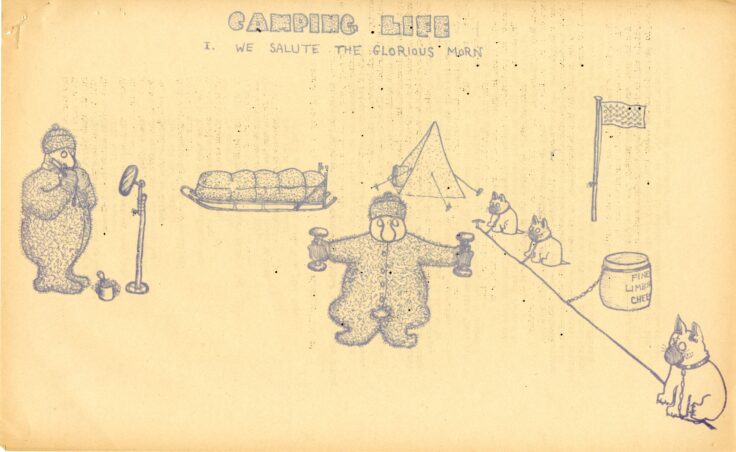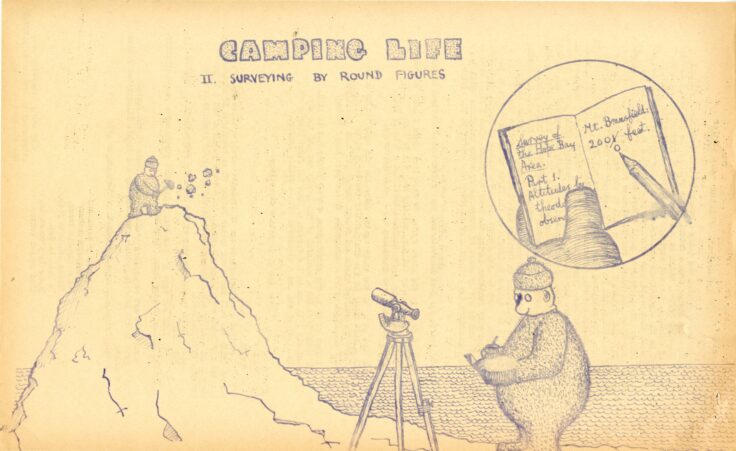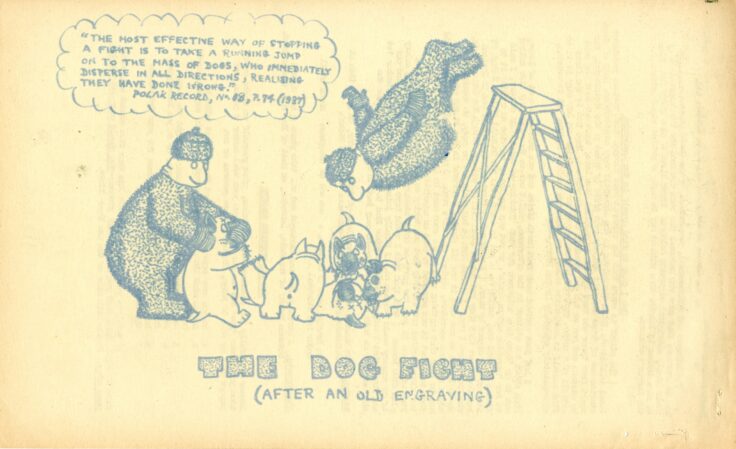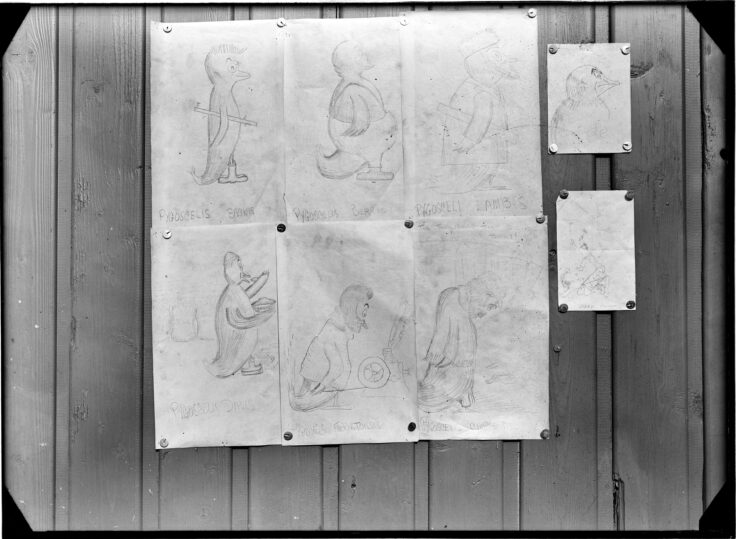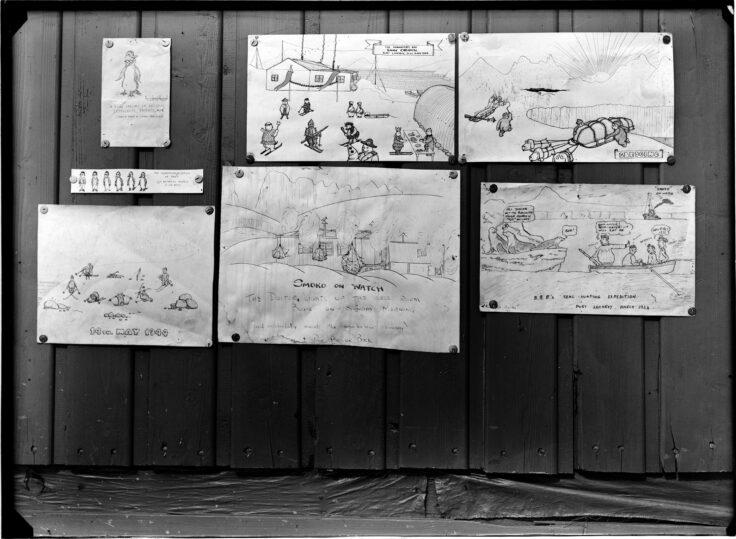Midwinter’s Day marks the shortest period of daylight in the year and has long featured prominently in the polar calendar. For the winterers of Operation Tabarin, as with the generations of polar explorers who preceded them, it was a day of celebration. Botanist Ivan Lamb recalls the solstice day at Hope Bay in 1945:
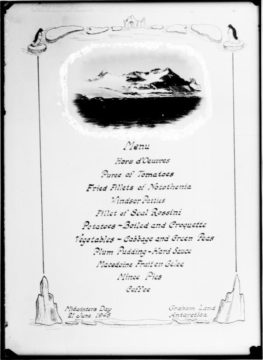
“Thursday, 21 June. (Midwinter’s Day) A general holiday to celebrate the turning of the sun on the shortest day of winter. Taylor, James, Russell, Back and myself went over to Eagle Cove with the dog teams and brought back the remainder of the anthracite and stores and also some drums of paraffin. All that remains there now are some drums of paraffin, petrol and alcohol. In the afternoon, Taylor and I walked up to the Boeckella Lake, where we removed some stones bearing lichens, and brought them back for microscopic examination. In the evening Berry and Blyth served up a magnificent dinner, including fresh fried Notothenia [rock cod] and seal steaks, and we had a musical evening afterwards; I took a flashlight photograph with the plate camera…The inmates at the survey office have produced a duplicated periodical, the “Hope Bay Howler”, containing articles of topical interest to us.”
Source: Ivan M. Lamb. (Archives ref: AD6/1A/1944/B)
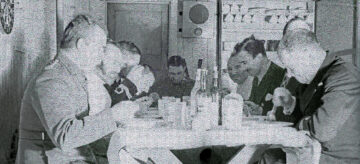
Christmas celebrations at Hope Bay later that year were a more muted affair. Expedition leader Andrew Taylor, Lamb, surveyor Victor Russell and stores officer Gwion Davies were away on fieldwork and everyone, on base and sledging, were anxious for news of relief arrangements for 1946. Even the cooks, Tom Berry and Johnny Blyth were hard pressed to match their previous culinary accomplishments as the pantry, though far from bare, had grown monotonous. For Taylor and co. their sledging rations were at least supplemented by roast skua.
Midwinter and Christmas were not the only festive occasions punctuating base routine. On 17th March 1944, St Patrick’s Day, the personnel of Port Lockroy were treated to a sing-song led by Berry and accompanied on mouth organ by then Tabarin commander James Marr. Medical officer Eric Back provided six bottles of hoarded beer to crown the evening.
The arrival of the HMS William Scoresby at Port Lockroy provided another reason for celebration as Lamb recorded in his expedition diary:
“Monday, 20 March 1944. An extremely fine, sunny, calm, day. Marchesi, Flett, Graham and members of the crew [of the Scoresby] came ashore, bringing various articles which we had ordered, and also a small amount of mail from Port Stanley. The Rubberoid roofing felt was put on at once by Ashton and a number of helpers. Taylor and I spent the day looking out survey and general scientific stores to be sent back to Base “B”. By the evening the extension had been swept out and tidied up, and a long table laid with white cloth in the large room, which is to be the new messroom. Four members of “Scoresby’s” compliment came ashore to dinner, and an excellent meal served up by Berry. This was followed by a gramophone concert, and the guests left about 2300 hrs., after which the party continued. Unfortunately Berry, while performing a fan dance, fell and injured his foot.
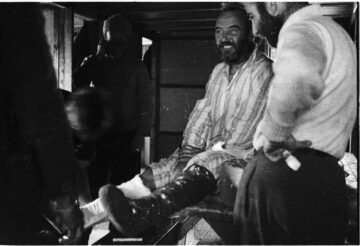
Tuesday, 21 March. The heaviest snowfall we have yet had occurred this morning, about five inches in depth, but the temperature was high, and it soon became slushy. Marr spent the day in his new office, attending to official correspondence pending the “Scoresby’s” return to Port Stanley. Others continued tidying up the new messroom, which all agree is now very cosy. Back finds that Berry apparently broke a bone in his foot last night, and so the latter will be bedridden for some time. Blair deputised in the post of cook very credibly, assisted by Blyth, the new cook who has just arrived from Stanley on the “Scoresby” to relieve Blair. Davies and I continued to look out the stores to be sent back to Base “B”; as it was snowing heavily “Taff” [Davies] would crawl under the tarpaulins placed over the stores, and move around underneath it looking for certain stores and cases – “a job for a bedbug”, as he put it.”
(Source Ivan M. Lamb, Archives ref: AD6/1A/1944/B).
A source of amusement for the winterers of Operation Tabarin was the unofficial base magazine, an often intimate chronicle of Antarctic life. Eric Back recalls how he became editor of The Hope Bay Howler:
Click below for a selection of Lamb’s plates from The Hope Bay Howler:
The following images were likely drawn by Lamb for the nascent Port Lockroy Prattler during 1944, click to enlarge:
Contact with the outside world was of immeasurable importance to the men of Operation Tabarin. Mail was eagerly anticipated whenever a ship called at one of the bases. However owing to sea ice conditions the stations were physically cut off for much of the year. Radio communications offered an alternative means of reaching home but wartime security measures initially restricted contact between winterers and their families as Eric Back recalls:
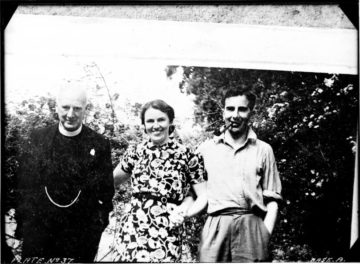
There was a perception on the bases of being overlooked by the expedition authorities in Stanley and London. Chief wireless operator “Fram” Farrington describes the situation:
News of events international and domestic arrived over the radio, underscoring the value of the wireless operators with Operation Tabarin. On 24th April 1944 Norman Layther on Deception Island picked up reports that the BBC Radio Overseas Service to North America had inexplicably revealed Tabarin’s secret existence to the world. The given explanation that the expedition was protecting vital whaling interests was greeted with amusement on the bases. News of the end of the Second World War reached so far as a sledging party near Crown Prince Gustav Channel via their field radio, albeit five days late. Surveyors David James and Victor Russell shared a cigar and a bar of chocolate in their tent to mark the occasion. Of a more personal nature on Midwinter’s Day 1944 Farrington appeared with a signal for Marr containing the happy news that his wife had given birth to a son.
